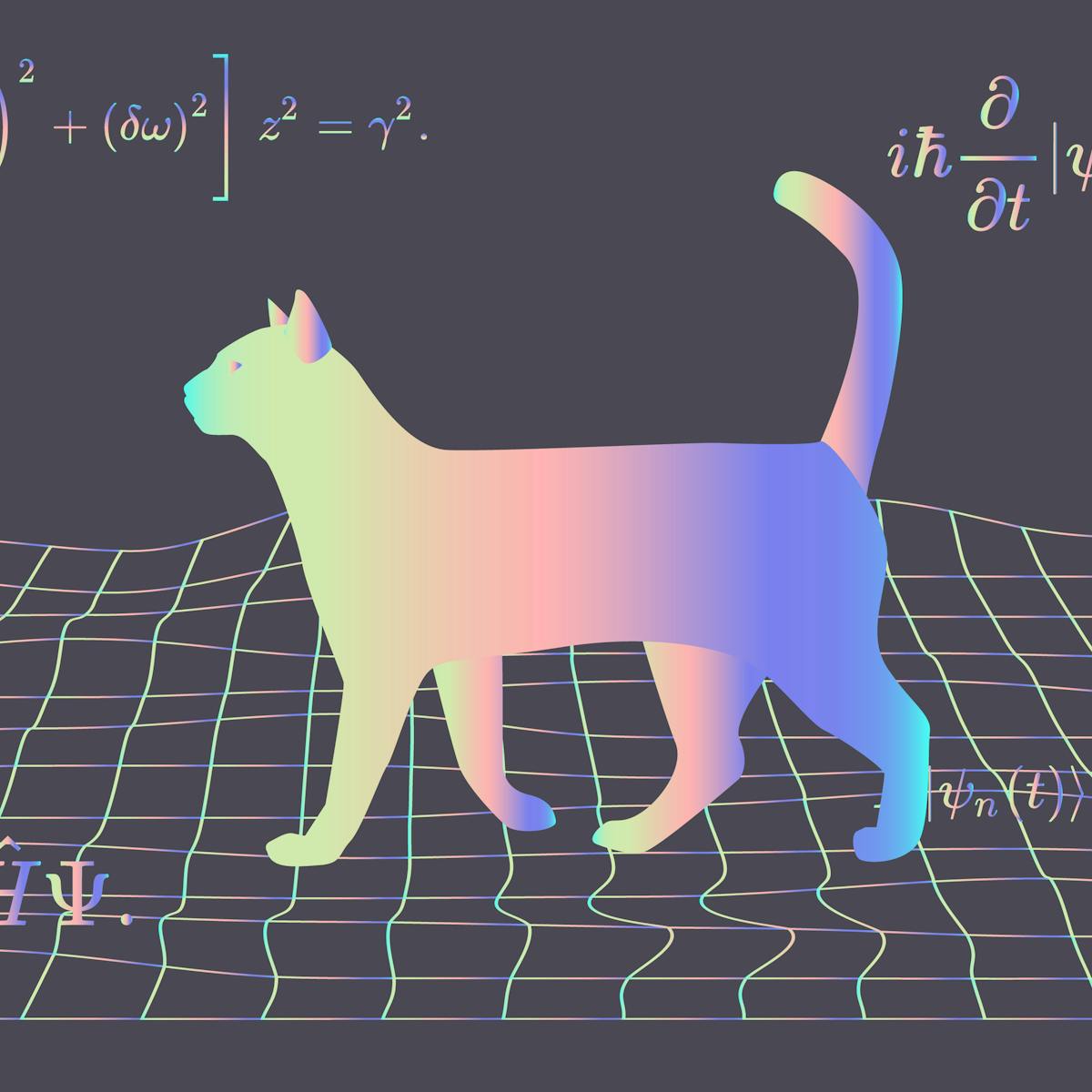Quantum Superposition: Myths and Facts
Quantum Superposition: Myths and Facts
By Frank Lin

Quantum Superposition is one of the most common themes of quantum mechanics. It is popular depicted in the Schrodinger's Cat Thought Experiment which "shows the weird and bizarre nature of quantum mechanics". When I was a kid, I learned about Schrodinger's Cat in a physics basher book. The thought experiment seemed absurd to me. "How can something be both dead and alive?" I knew that physicists, who study quantum for a living, agree that Schrodinger's cat is a true reality. I didn't know how physicists could be so stupid and throw out all logic for a silly thought experiment--that was until I learned that Schrodinger's Cat is not a true reality, and that physicists do not believe that cats can be dead and alive. Not even Schrodinger did! I'll explain.
What is Superposition?
It turns out that there is nothing inherently quantum mechanical about superposition. Superposition is just as "quantum mechanical" as addition, subtraction, and multiplication. Superpositions occur in nature all the time. If you've ever done any science in your life, then you've dealt with superpositions. I may be losing you guys right now. How can such an absurd statement be true? The simple answer is that the statement isn't absurd at all. What's absurd is the misinterpretation of such a simple concept. It's time to stop procrastinating--here's the definition of "superposition". A superposition of elements is a linear combination of those elements, and a linear combination is just a sum of elements scaled by some constants (also called a weighted sum). An element in this context is just any mathematical object (vector, scalar, matrix, etc.,). That's all what a superposition is. Seems very simple right? Well that's because it is. A superposition doesn't mean "multiple states at the same time". It just means a "linear combination of multiple states". If you're still lost, here's some examples.
27 is a superposition of 2 and 3 since 27 = 6(2) + 5(3). In this scenario, 2 and 3 are the elements, and 6 and 5 are the scaled constants.
4 is a superposition of 2, 2, and 7, since 4 = 1(2) + 1(2) + 0(7). In this scenario, (2, 2, 7) are the elements, and (1,1,0) are the constants. It is really that easy. All additions are superpositions.
Numbers aren't the only element that we can choose here. Let's use vectors
Let w=2v+3y, where (w,v,y) are vectors. We can say that Vector w is in a superposition of vector v and vector y, since v and y are being added together with 2 and 3 being the constants.
Abstract: A superposition of 2 elements A and B is aA + bB where a,b ∈ R and A,B ∈ V
As you guys have seen, superposition is a very simple concept, which is often misinterpreted as meaning "multiple states at the same time" (you wouldn't say 5 is 1 and 4 at the same time would you?). A superposition is just a linear combination of elements which are under the subject of linear algebra. Linear algebra is the most common form of math used to describe real things since many systems in real life are linear. Quantum Mechanics is no exception to this.
Superposition in Quantum Mechanics
Honestly, it shouldn't even be called quantum superposition. You don't say "quantum addition" or "quantum subtraction". Nonetheless, it's commonly used, so we'll use it. The Schrodinger equation of Quantum mechanics is a linear differential equation shown below.

You do not have to understand what this equation means for this post. All you need to know is that it is a linear differential equation. If you have a linear differential equation, a superposition of the solutions to the equation is also a valid solution. This implies that a superposition of the solutions to the Schrödinger Equation is also a solution. It turns out that there are an infinite number of solutions to the Schrödinger equation. We can add all of these wave functions together (all scaled by an arbitrary amount) to form a new wave function. And that's it.
What does Schrodinger's Cat mean?
It was used to be believed that superposition meant "multiple states at the same time". This belief was pushed by Werner Heisenberg. Schrodinger invented the thought experiment to show how Heisenberg's interpretation of superposition was wrong. The thought experiment succeeded to show how Heisenberg's interpretation was wrong, which is why textbooks do not refer to superposition as "multiple states at the same time". It looks like Popular science still needs some time to catch up.
Comments
Post a Comment